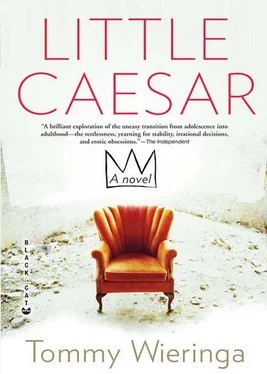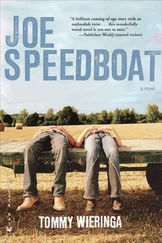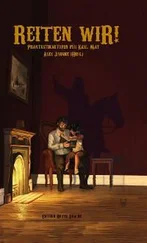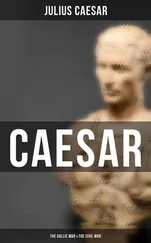I tell her about Warren Feldman and how he, when the district council decided not to extend the concrete seawall from Alburgh to Kings Ness, took things into his own hands. He wrote to construction companies and road builders, offering them the opportunity to dump their rubble along his cliff for half the price they would pay elsewhere. In that way he obtained both income and the material he could use to protect Kings Ness against the sea. At the time, fourteen houses were still standing there. During the war there had been twice as many.
Warren Feldman had powerful opponents. The most grief was given him by Natural England. According to their particular conservationist doctrine, the sea was to be given free play on the coast around Alburgh; the huge quantity of fossils that appeared from the cliffs after heavy storms was purportedly a topographical novelty. The cliff was put on the list of SSSIs, Sites of Special Scientific Interest.
‘First people, then fossils,’ Warren said, and commenced a struggle that would last the rest of his life.
It started with ninety thousand tons of peat from the South Lowestoft Relief Road. That was the basis for his seawall. It had to be spread out along the entire foot of Kings Ness, over a length of almost a kilometer. Trucks carrying sand, clay and stones dumped their loads on the cliff, a dragline pulled the debris from all those building projects out across the seawall and piled it into a grim barrier. Chunks of stone protruded from it, boulders of reinforced concrete, sometimes an old shoe. I remembered Warren up there, on the cliff, overseeing the work on the wall down below. The wind blew tears in his eyes and crumbs from his beard, which served as the archive of many meals. He leaned on his walking stick, a thin raincoat flapping around his upper body — he never bothered to zip it shut. He had a mysterious preference for wearing layers of two or three T-shirts, with two sweaters over that. He never wore anything but outdoor sandals. In the summertime his unusually big toes stuck out of them.
King Knut, they called him, based on a legend that is usually misconstrued. It was long ago that Catherine had told me the story of Knut, who ruled over England and Scandinavia sometime around the eleventh century. It started with the courtiers flattering their king, telling him how all the world would bow to his will.
‘The sea as well?’ Knut asked.
‘The sea as well,’ the nobles echoed.
Upon which Knut had his throne carried down to the beach and waited for the tide to come in. The water approached. Knut ordered the sea to withdraw. The water rushed in around his ankles, and again he called on the waves to obey him. The courtiers retreated to safety, and only when Knut was up to his knees in the water did he stand up and wade to the beach. Throwing his crown onto the sand, he said to his followers, ‘There is only one King worthy of the name, and that is He whom heaven, earth, and sea obey by eternal laws. Reserve your praise for Him.’
I remember finding that a strange, Christian ending to a story about a Viking king and the sea, but Catherine — serious-minded Catholic that she was — was taken aback by my skepticism.
‘If you were my child, oh, oh, oh. .’
Later I learned that a wading bird, calidris canutus , otherwise known as the red knot, takes his name from this same legend.
A couple is walking towards us down the beach. Hand in hand, both wearing orange body warmers. I once walked with someone hand in hand, on Venice Beach, after I had left Kings Ness. I don’t know how I would react if Linny would suddenly take my hand, as one of my own sort in search of warmth.
I show her the place where the broken pipes which once led to our house were now sticking out of the cliff. Erosion having continued unabated, we might even be standing where the house once stood. She looks at the surf, you can hear gravel rolling in the undertow.
‘So here England disappears foot by foot,’ she says.
We walk on and climb Kings Ness from the north. Dull yellow light is filtered in downy spots across the water. On the horizon we can see a mirage, a flat, glistening surface, as though an ice floe were sliding in this direction.
‘Oh, yuck,’ Linny says when we get to Flint Road.
‘Via Dolorosa,’ I mumble.
She hops to avoid the dead rabbits and potholes.
‘And I cried so hard at the end of Watership Down !’ she shouts.
After number 17 we leave the road and climb the overgrown path that once led to our house. In my memory it still stands there. I can walk up to the door, open it and smell the furniture wax and cleaning fluids that Margareth keeps in the cupboard beside the back door. It comes as a deep, never-ending surprise to find that things that no longer exist still live on inexorably in my head, and will remain there until the end of days. I understand now, better than ever, why people put up memorials and place inscriptions on benches. Our life’s work must not come to dust.
The gorse has stretched its tortured limbs across the path. The little shock at the emptiness along the edge, where memory has placed a house.
‘This is where it was,’ I say.
‘Which number?’ she asks.
I don’t understand what she means.
‘The house number.’
‘Fifteen. Over there is where it was. And there’ — I point to a spot even further away, across the sea — ‘there lay Castrum.’
The bar is quiet that evening. I knock off early. Linny is the only one in the place, except for a man who takes a sip of whiskey and a sip of water by turns.
‘Hello there, old night owl,’ Leland says.
I sit down beside Linny, the only person in the world now who really knows anything about me. She’s drinking a kir cocktail, I eat the cherry. She says, ‘I’m leaving tomorrow.’
I nod and realize that Warren’s funeral is tomorrow as well. That I’m supposed to play in the church. I don’t even know what time.
Later, in the lounge, a bottle of water and a bottle of Chivas Regal within arm’s reach, we slip back into our conversation like a hand into warm water. I tell her about Selwyn, who opened my eyes. It was with him that things started.
I’m impressed by his physique and his handsome head of blond hair, he finds me interesting I believe because I am hors categorie . We both play in the reserves. In the shower after matches I can hardly take my eyes off him — Michelangelo’s David, but then with a bigger cock. During the match, when we’re attacking, I tend to stay close to him; by means of sheer force or a fluid sidestep he’s always able to force a couple of breaks, it’s worthwhile to operate in his wake. A few times I even score after he gets tackled just before the line and passes the ball to me as he falls. Scouts from Bath and Leeds come to see him play, but his parents have forbidden him to take up a professional career; he can play rugby at Oxford or Cambridge as well. It’s easy to imagine him studying economics or medicine, rolling right through it and then going on to lead a smooth and easy life. In amazement I see how an even-tempered, friendly person like Selwyn can also be merciless — on the playing field, but also during the hunt. He owns his own rifle, a Mannlicher-Schoenauer with a walnut stock; I’ve watched him shoot wood pigeons, grey squirrels and magpies without blinking an eye. His ruthlessness contains no rage, not even cruelty — it is as even-keeled as the rest of his personality.
One frosty February morning we go out with a group of hunters, including his father. They’re decked with bandoleers, a tractor with a trailer full of hay takes the nine of us from one hunting area on the estate to the other. We comb the woods in search of vermin. That’s what they call them. Selwyn blows a grey squirrel to pieces and says that it’s an exotic species, a kind that doesn’t belong here. I glance over to see if it’s a joke, a sly reference to yours truly, but I see nothing of the sort. Norvie, the game warden, says grey squirrels are harmful, they eat the bark from the trees. I can’t avoid the feeling that we’re more harmful to these animals than they are to us, but I keep such soft thoughts to myself; I will be like them, and laugh loudly at their jokes.
Читать дальше












